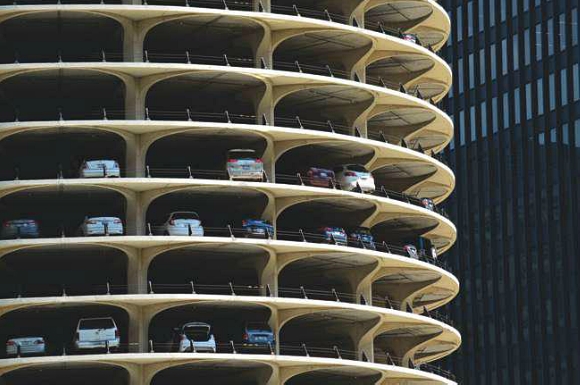
Thin film coatings for concrete, which provide additional concrete cover through their performance properties, are an accepted method for protecting the underlying steel reinforcement from corrosion.
At the NACE International Concrete Service Life Extension Conference in May, different types of coatings for concrete buildings and parking structures were discussed by H. Peter Golter, business development manager with 3M Co. (St. Paul, Minnesota). During his presentation, Golter commented that concrete is vulnerable and can absorb constituents such as carbon dioxide (CO2), chlorides, oils, fats, water, and other soluble materials. Although coatings can protect concrete from these contaminants, he noted that one type of coating does not satisfy all applications and outlined several design factors to consider when selecting a protective coating. These included the geographic location and climate, wall and slab types, form of insulation, and type of air barrier.
According to Golter, the coatings most commonly used on building structures are acrylics, urethanes/polyurethanes, and epoxies; and numerous types of materials are available within each group. Depending on the type of coating used, protection properties can include CO2, chloride, and ultraviolet (UV) resistance, abrasion resistance, and crack bridging. Acrylics, for example, are typically used on vertical surfaces and horizontal non-traffic/foot traffic surfaces. Urethanes can be used on vertical surfaces, horizontal surfaces with foot traffic, and with some coating formulations, horizontal surfaces with vehicular traffic. Epoxies also can be used on vertical surfaces, horizontal surfaces with foot traffic, and horizontal surfaces with vehicular traffic, depending on the particular coating.
Before installing a coating, Golter says an overview of the project needs to be completed. This includes, among other things, reviewing the primary objectives for a coating system, surveying the condition of the substrate, determining substrate repairs and surface preparation required prior to coating application, qualifying the coating contractor, planning for third-party validation of the coating application, and developing a maintenance program.
Golter also stressed asset management and the importance of developing a comprehensive sustainability program with a “repair, protect, and enhance” strategy when approaching a project. The driving force behind this, he says, is return on investment for the sustainability program. He listed several questions to answer before finalizing a plan, such as the condition of the structure, its remaining service life, the maintenance that has been deferred, and what should be repaired first. He cautioned that years of deferred maintenance can ultimately lead to unmanageable maintenance and repair budgets, particularly when the strategy is to first repair the worst deterioration and then worry about the rest. Ultimately, he said, it is the sustainability of a concrete structure that allows conservation of resources and better use of finite funds.
More information can be found in Golter’s paper, no. W17 from the Concrete Service Life Extension Conference, “Concrete Coatings—What Are the Different Types and Why Use Them?”